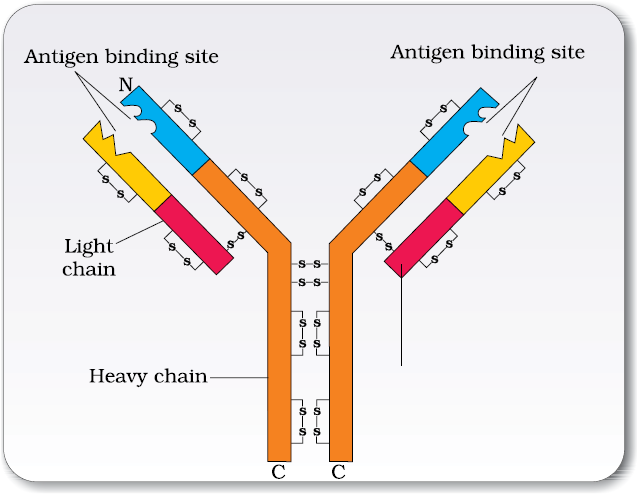Everyday we are exposed to large number of infectious agents. However, only a few of these exposures result in disease. Why? This is due to the fact that the body is able to defend itself from most of these foreign agents. This overall ability of the host to fight the disease-causing organisms, conferred by the immune system is called immunity.
Immunity is of two types: (i) Innate immunity and (ii) Acquired immunity.
Innate immunity is non-specific type of defence, that is present at the time of birth. This is accomplished by providing different types of barriers to the entry of the foreign agents into our body . Innate immunity consist of four types of barriers. These are —
(i) Physical barriers : Skin on our body is the main barrier which prevents entry of the micro-organisms. Mucus coating of the epithelium lining the respiratory, gastrointestinal and urogenital tracts also help in trapping microbes entering our body.
(ii) Physiological barriers : Acid in the stomach, saliva in the mouth, tears from eyes–all prevent microbial growth.
(iii) Cellular barriers : Certain types of leukocytes (WBC) of our body like polymorpho-nuclear leukocytes (PMNL-neutrophils) and monocytes and natural killer (type of lymphocytes) in the blood as well as macrophages in tissues can phagocytose and destroy microbes .
(iv) Cytokine barriers : Virus-infected cells secrete proteins called interferons which protect non-infected cells from further viral infection .
Acquired immunity, on the other hand is pathogen specific. It is characterised by memory. This means when our body encounters a pathogen for the first time it produces a response called primary response which is of low intensity. Subsequent encounter with the same pathogen elicits a highly intensified secondary or anamnestic response . This is ascribed to the fact that our body appears to have memory of the first encounter.

Figure 8.4 Structure of an antibody molecule
The primary and secondary immune responses are carried out with the help of two special types of lymphocytes present in our blood, i.e., B-lymphocytes and T-lymphocytes. The B-lymphocytes produce an army of proteins in response to pathogens into our blood to fight with them. These proteins are called antibodies . The T-cells themselves do not secrete antibodies but help B cells to produce them. Each antibody molecule has four peptide chains, two small called light chains and two longer called heavy chains. Hence, an antibody is represented as H2L2. Different types of antibodies are produced in our body. IgA, IgM, IgE, IgG are some of them . A cartoon of an antibody is given in Figure 8.4. Because these antibodies are found in the blood, the response is also called as humoral immune response . This is one of the two types of our acquired immune response – antibody mediated. The second type is called cell-mediated immune response or cell-mediated immunity (CMI) . The T-lymphocytes mediate CMI. Very often, when some human organs like heart, eye, liver, kidney fail to function satisfactorily, transplantation is the only remedy to enable the patient to live a normal life. Then a search begins – to find a suitable donor. Why is it that the organs cannot be taken from just anybody? What is it that the doctors check? Grafts from just any source – an animal, another primate, or any human beings cannot be made since the grafts would be rejected sooner or later. Tissue matching, blood group matching are essential before undertaking any graft/transplant and even after this the patient has to take immuno–suppresants all his/her life . The body is able to differentiate ‘self’ and ‘nonself’ and the cell-mediated immune response is responsible for the graft rejection.